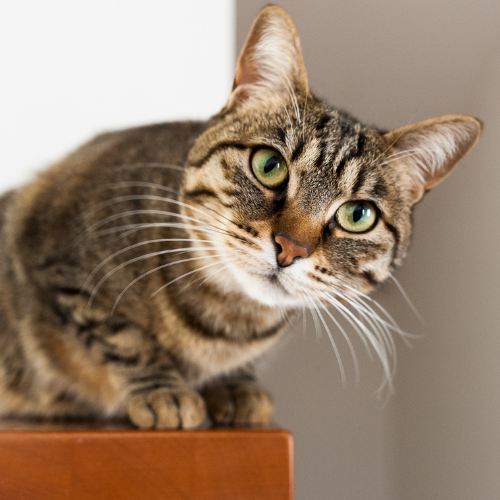The Secret Life of Cats: What They Really Do When You’re Not Home
Cats have long been shrouded in mystery, captivating humans with their enigmatic behavior and independent nature. While we often see them as aloof creatures, the truth is that cats lead incredibly dynamic lives, even when we’re not around to witness them. So, what exactly do our feline friends get up to when they have the house to themselves?
The Art of Napping: More Than Just Sleep
One of the most common activities cats engage in when left alone is napping. However, this isn’t just ordinary sleep. Cats are masters of the power nap, spending up to 16 hours a day asleep. This behavior is a remnant of their wild ancestry, where conserving energy was crucial for survival. Cats are crepuscular creatures, meaning they’re most active during dawn and dusk. Their daytime naps prepare them for these peak activity periods.
Interestingly, cats experience REM (Rapid Eye Movement) sleep, just like humans. During this phase, they dream, which explains the occasional twitching of their paws or whiskers. What do they dream about? Experts believe it could be anything from chasing prey to reliving interactions with their human companions.
Exploring Their Territory: The Indoor Safari
When they’re not napping, cats are natural explorers. Your home is their kingdom, and they take their role as rulers very seriously. Cats will patrol their territory, checking for any changes or intruders. This behavior is deeply ingrained, as their wild ancestors needed to ensure their environment was safe from predators and rivals.
Cats use their acute sense of smell to gather information about their surroundings. They may rub their face against furniture or objects, marking them with pheromones from glands located around their face. This behavior not only marks territory but also provides a sense of security and familiarity.
The Playful Predator: Hunting and Pouncing
Cats are instinctual hunters, and even the most pampered house cat retains this primal urge. When left alone, they often engage in play that mimics hunting behavior. This can include stalking and pouncing on toys, shadows, or even imaginary prey. It’s not uncommon for cats to have a “favorite” toy that they treat as their quarry, carrying it around the house triumphantly.
Some cats may even bring their toys to their food bowl, mimicking the behavior of wild cats who bring their catch to a safe place to eat. This seemingly quirky action is a testament to their deep-rooted instincts.
Unusual Feline Behaviors: The Quirks That Amaze
Cats are known for their peculiar habits, and some of these can be quite amusing. For instance, many cats are fascinated by running water. You might find your cat sitting by the sink, mesmerized by the dripping faucet. This behavior is thought to be linked to their preference for fresh, moving water, which is less likely to be contaminated than stagnant sources.
Another unusual behavior is the “cat zoomies,” where a cat suddenly dashes around the house at high speed. This burst of energy is a normal part of feline behavior, often occurring after a nap or a meal. It’s their way of expending pent-up energy and is usually followed by another nap.
Communication Through Body Language: The Silent Conversation
Cats are masters of non-verbal communication, using body language to express a wide range of emotions. When alone, they might practice these signals, which can include tail movements, ear positions, and facial expressions. A cat’s tail is particularly expressive; a high, quivering tail indicates happiness, while a puffed-up tail signals fear or aggression.
Cats also communicate with their eyes. A slow blink is a sign of trust and affection, often referred to as a “cat kiss.” When you’re not home, your cat might practice this behavior with their reflection in a window or mirror, reinforcing their sense of security.
The Role of Technology: Watching Cats from Afar
In today’s digital age, many cat owners use technology to keep an eye on their pets when they’re away. Pet cameras allow you to observe your cat’s behavior in real-time, providing insights into their secret life. Some cameras even come with interactive features, enabling you to talk to your cat or dispense treats remotely.
Observing your cat through a camera can reveal surprising behaviors, such as their fascination with certain spots in the house or their routine of moving from one nap spot to another. It also offers peace of mind, knowing your furry friend is safe and content.
The Importance of Environment: Creating a Cat-Friendly Space
To ensure your cat thrives when you’re not home, it’s essential to create an environment that caters to their needs. Providing vertical spaces, like cat trees or shelves, allows them to climb and observe their territory from a high vantage point. This satisfies their natural curiosity and provides them with a sense of control.
Interactive toys and puzzle feeders can keep your cat mentally stimulated, preventing boredom and promoting healthy activity levels. Rotating toys regularly can also maintain their interest and mimic the unpredictability of hunting in the wild.
Conclusion: Embracing the Mystery
While we may never fully understand the secret life of cats, observing and appreciating their unique behaviors enriches our relationship with them. These independent creatures, with their mysterious ways and endearing quirks, remind us of the beauty of the natural world and the joy of companionship.
Whether they’re napping, exploring, or engaging in playful antics, cats lead lives full of wonder and adventure. By embracing their secret world, we can ensure they live happy, fulfilling lives, even when we’re not there to witness it.


